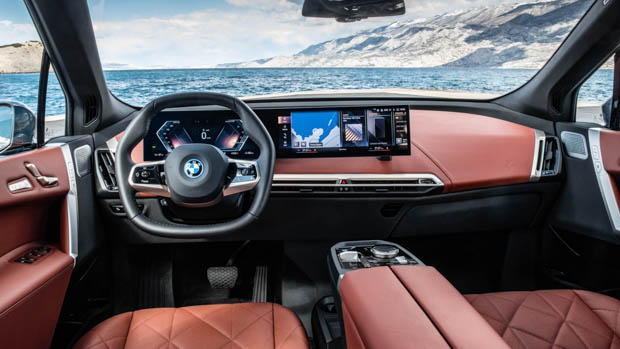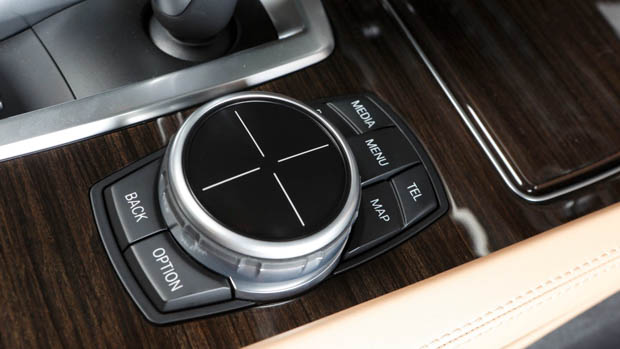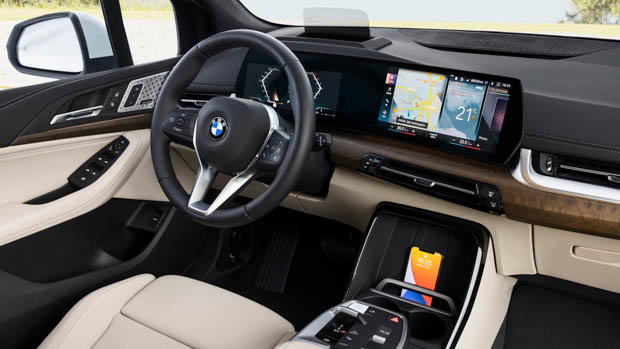-
Car Reviews
- All reviews
- Midsize SUVs
- Small cars
- Utes
- Small SUVs
- Large SUVs
- Large cars
- Sports SUVs
- Sports cars
- Vans
Latest reviews
- Car News
-
Car Comparisons
Latest comparisons
- Chasing Deals
Is this the beginning of the end for the iDrive rotary dial? iDrive 8 will go without the popular feature in the Active Tourer.
The next generation BMW 2 Series Active Tourer was unveiled overnight, but it came with one noticeable absence.
With the launch of the new iDrive 8 infotainment system, BMW has decided to ditch the much-loved and widely praised rotary dial – at least for iDrive 8’s implementation in the 2 Series Active Tourer.
Interestingly, the upcoming iX and i4 will continue to use this dial even with the updated iDrive 8 system.
The decision to ditch the dial in the 2 Series Active Tourer while retaining it in the i4 and iX indicates BMW could be gauging reactions to a future widespread removal – or a rotary iDrive controller could become a hallmark of larger BMW models only.
The iDrive system is moving on to be much more touch orientated, as well as being driven by a vast array of new voice commands and features, where drivers can keep their hands on the wheel for much more of the time.
The iDrive system was introduced by BMW in 2001 and was first implemented as an infotainment controller on the radical, Chris Bangle-penned E65 7 Series sedan.
In the intervening 20 years, BMW has fine-tuned the system to be one of the most functional on the market, and praise from automotive media and customers regarding the rotary iDrive system is common.
In its first iteration, iDrive helped to remove several buttons from the dashboard which were replaced by the iDrive controller – a push and turn dial located between the two front seats.
The dial allowed the driver or passenger to control a range of vehicle features including entertainment and navigation. Voice control was also an option back in 2001!
The dial has evolved over time, with the integration of ‘favourite’ buttons which surround the central dial. Specific buttons such as ‘Option’, ‘Menu’, ‘Tel’, ‘Media’ and ‘Map’ were included to help make navigating the system easier for the operator.
The dial also received a touch response pad on the top, allowing users to input characters using their handwriting.
In 2004, the company was the first to introduce a heads-up display which would project important information onto the windscreen in the line of sight of the driver.
In 2008, BMW was the first vehicle manufacturer to offer full access to the internet via the iDrive system.
2016 saw the integration of the BMW Connected App which meant that drivers could view the status of their vehicle and transfer navigation straight to the car remotely.
Over-the-air software updates were also implemented to make sure each car is running the correct version of iDrive.
While BMW was one of the first, many manufacturers today have developed their own versions of the rotary dial/ display combination.
This is the first time we have seen a BMW go without the dial and it is surprising that the upcoming i4 and iX, which are next generation electric-only models, will keep the dial for a little while longer.
It has got us thinking that the dial-free interior of the new Active Tourer is potentially a test to see how consumers react to the change.
If it’s a success, it is likely that the rotary dial will be phased out forever as voice command and touchscreens become even more sophisticated.
Rival German luxury carmaker Audi has nearly completed its mission to remove its own interpretation of the rotary dial from its models, with only the Q2 small SUV left sporting a rotary ‘MMI’ controller in the Audi lineup.
Mercedes-Benz ditched its own rotary ‘Comand’ knob several years ago, replacing it with a touchpad in more recent models.
Japanese automaker Mazda has moved in the opposite direction. In introducing its new-generation “Mazda Premium” models – the CX-30 small SUV and Mazda 3 small car – the brand declared that it would delete touch-capacity from its screens and focus on rotary dials instead.
Latest news
About Chasing cars
Chasing Cars reviews are 100% independent.
Because we are powered by Budget Direct Insurance, we don’t receive advertising or sales revenue from car manufacturers.
We’re truly independent – giving you Australia’s best car reviews.




